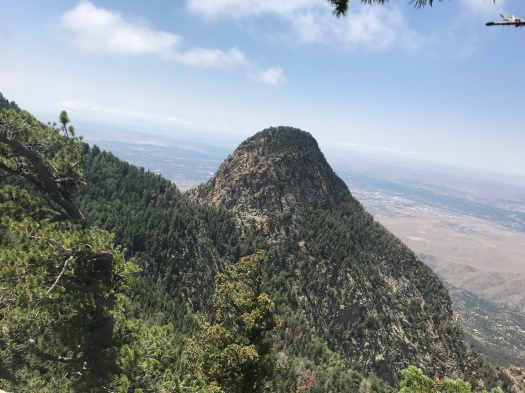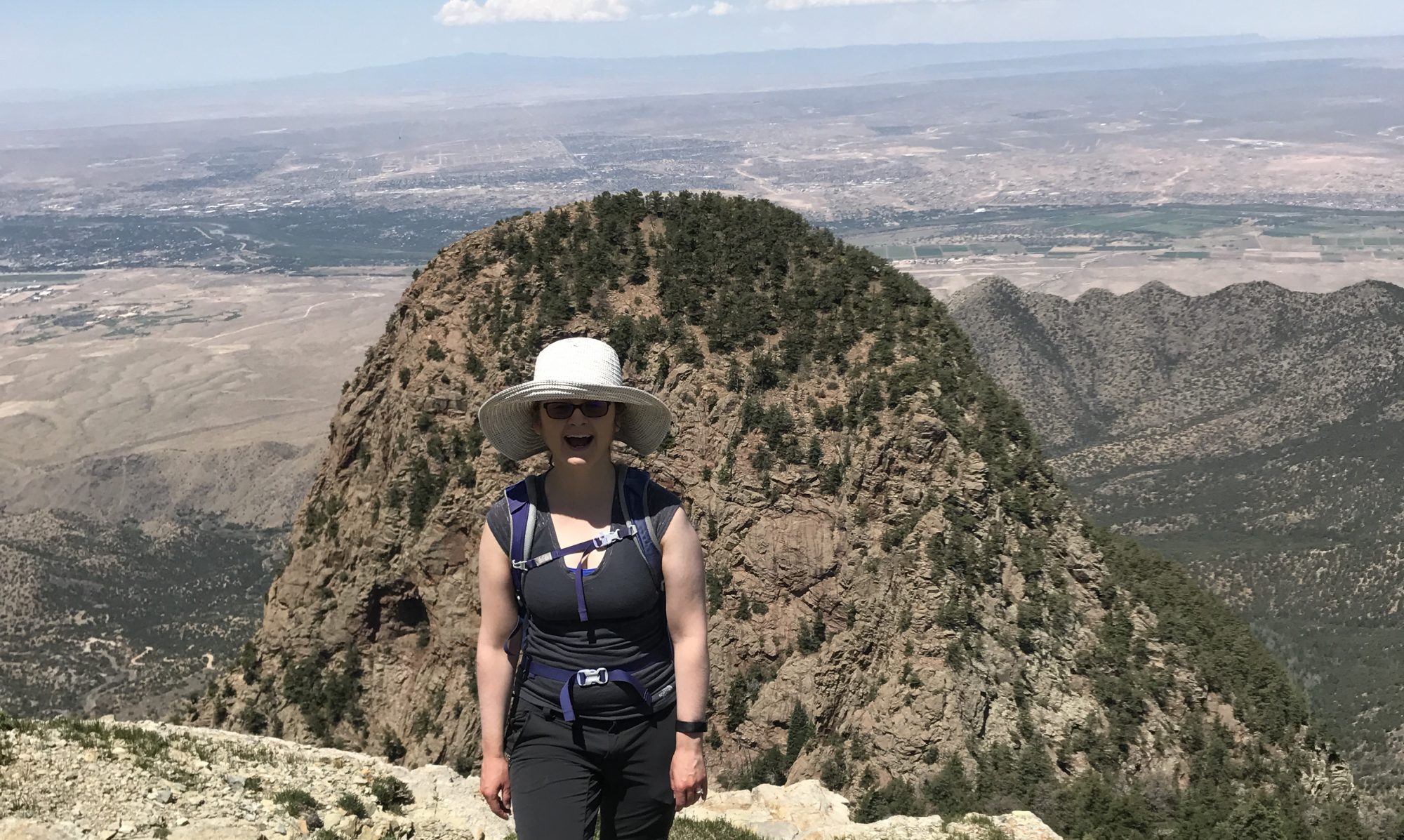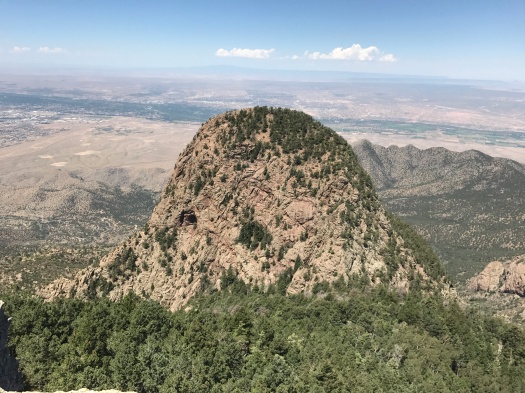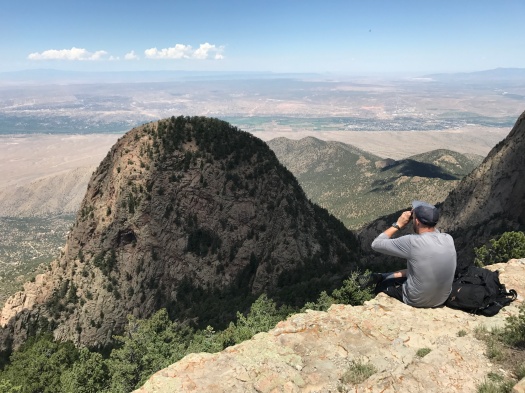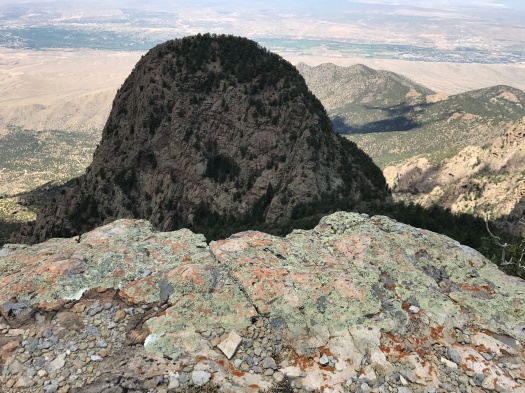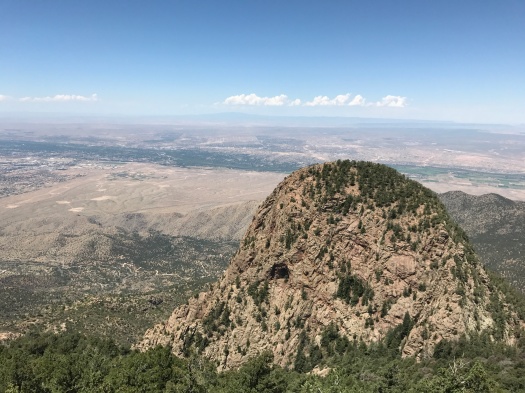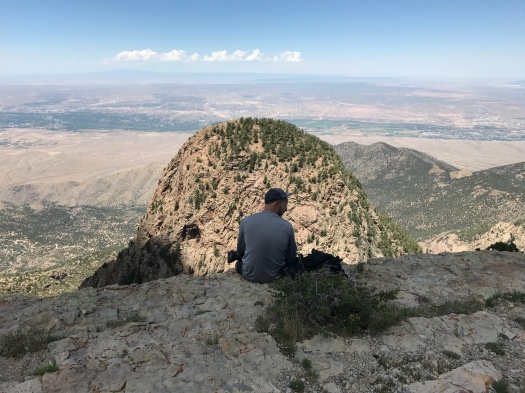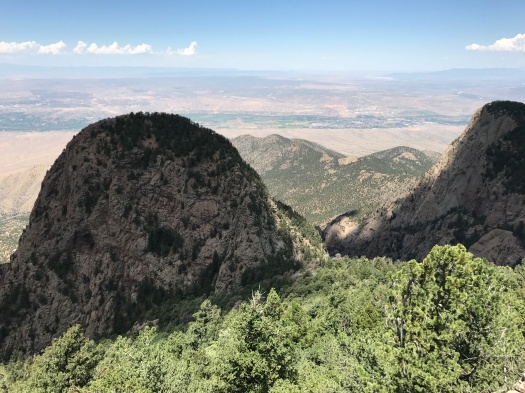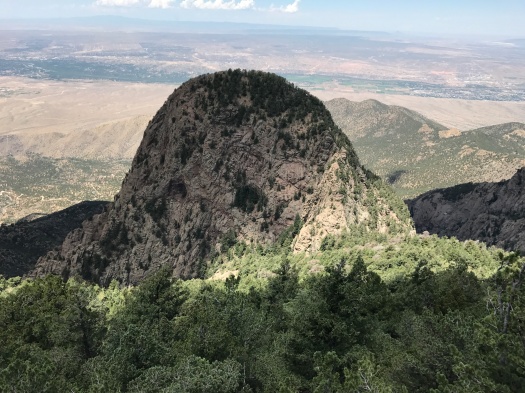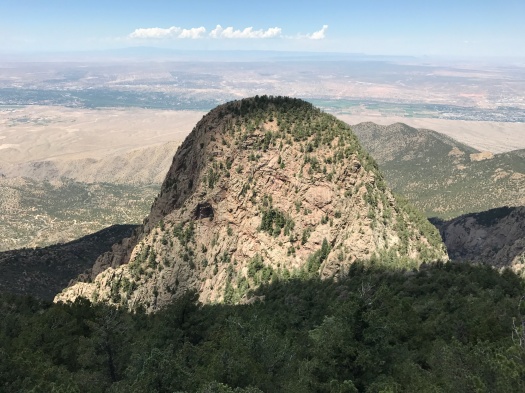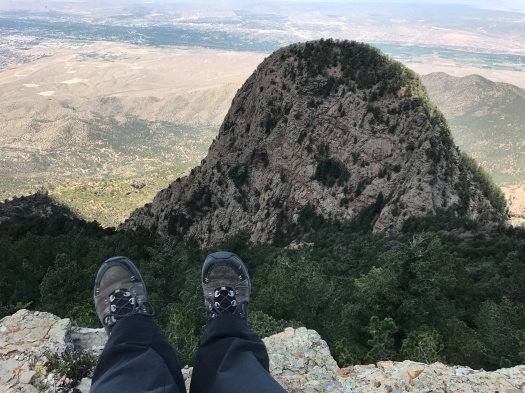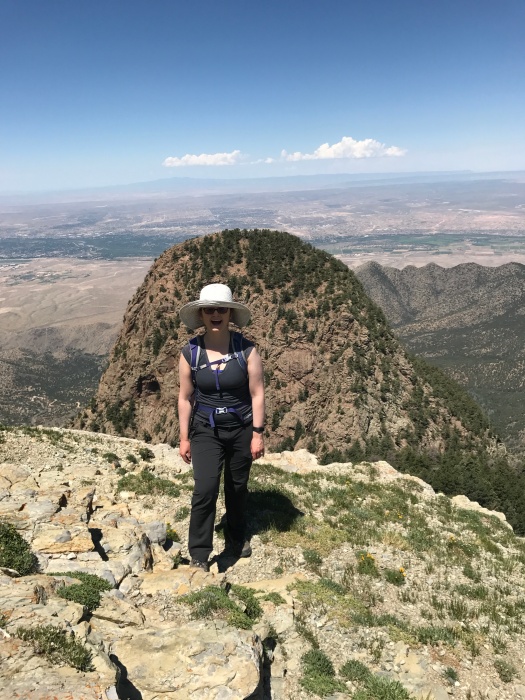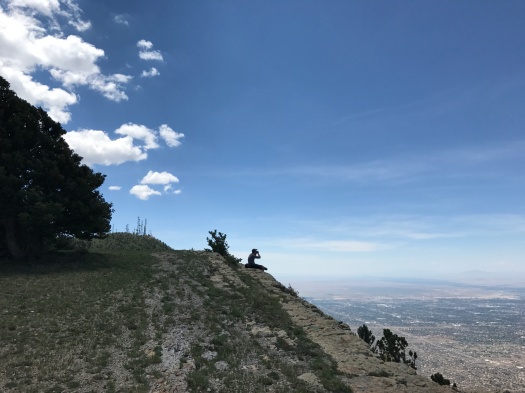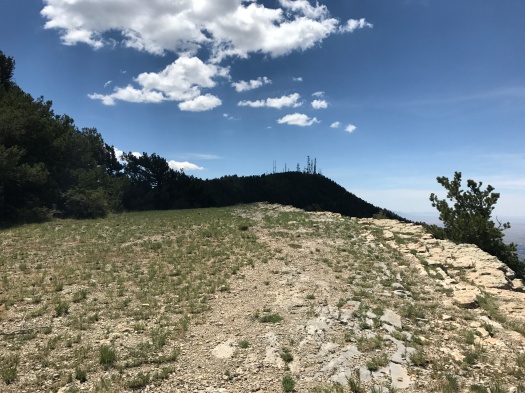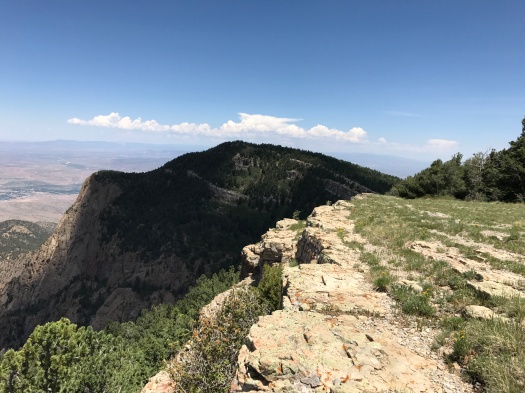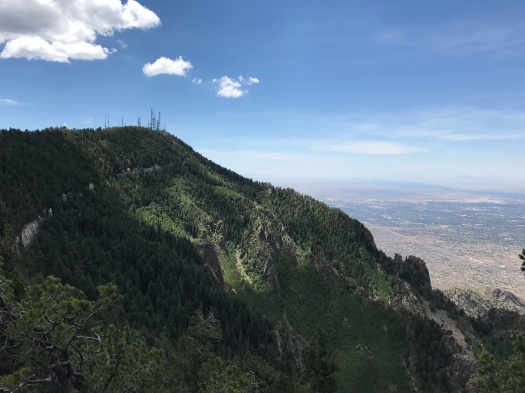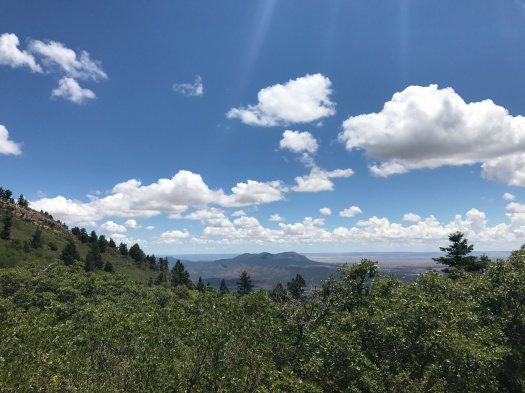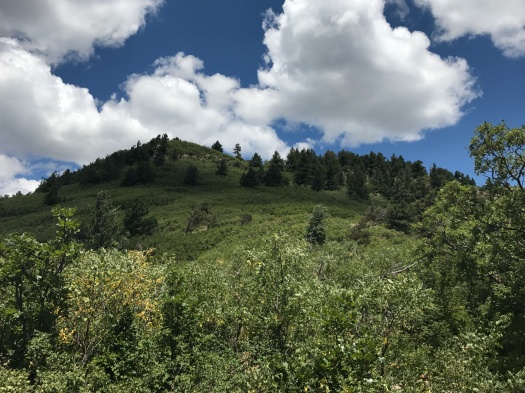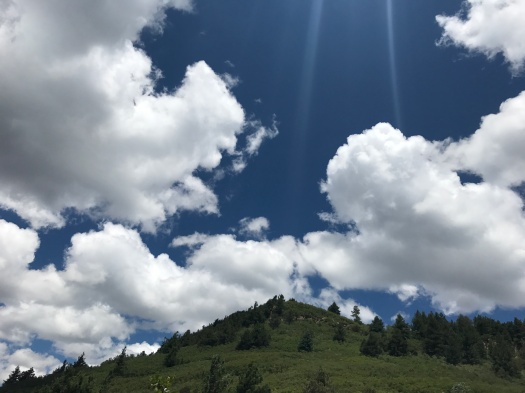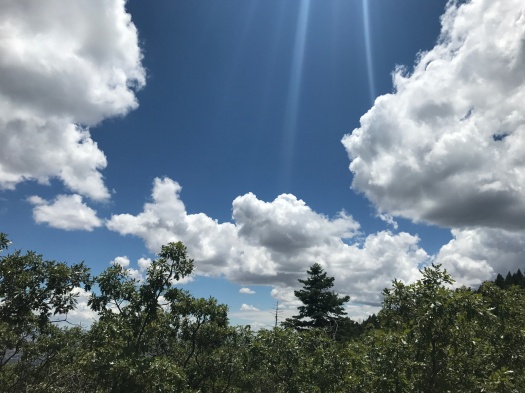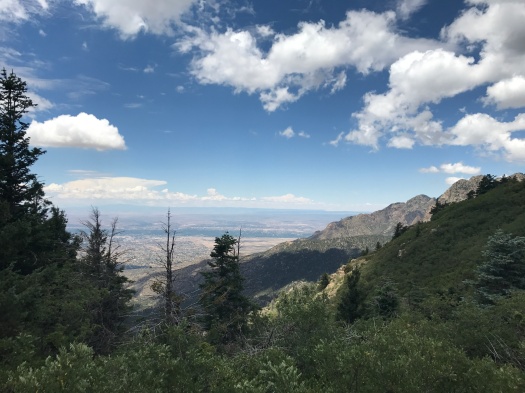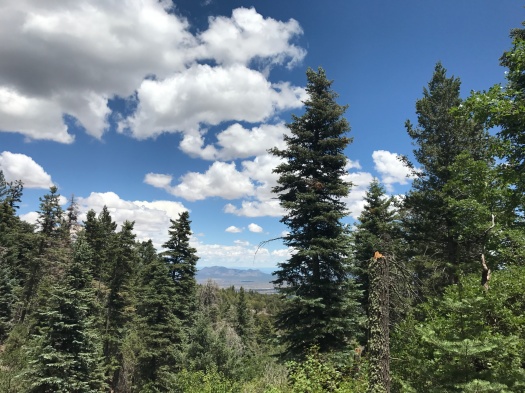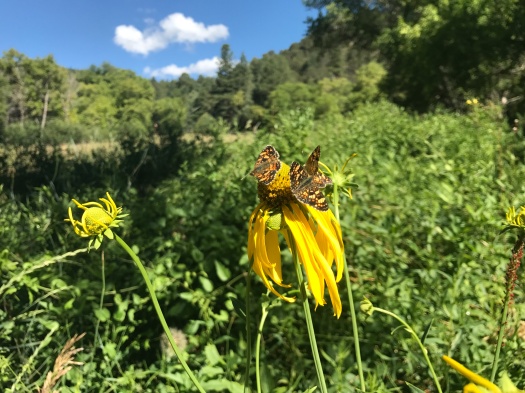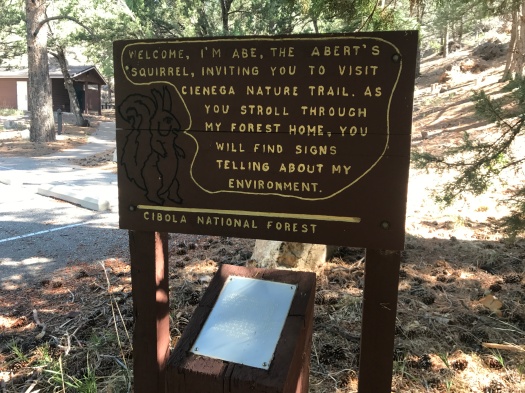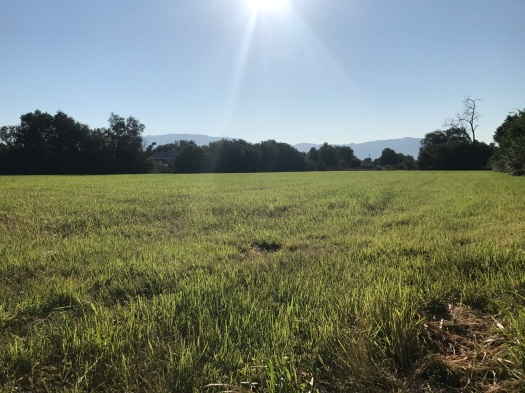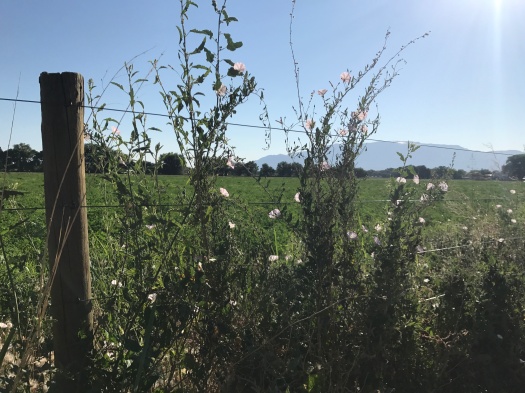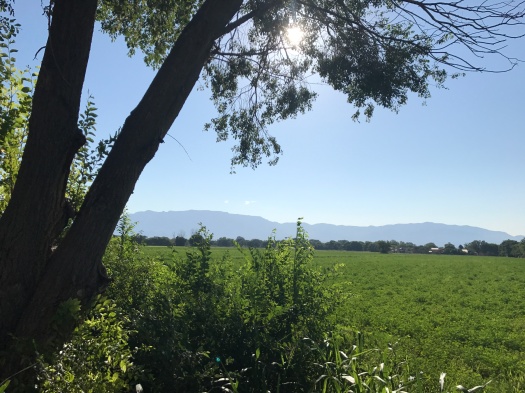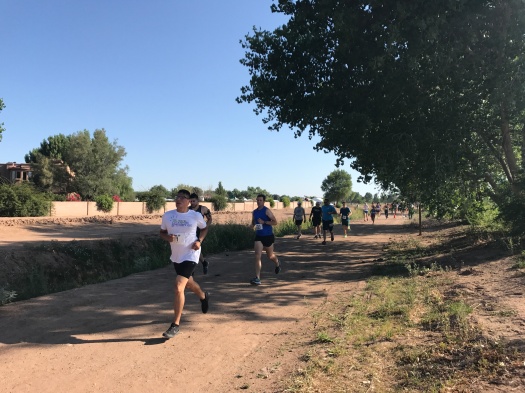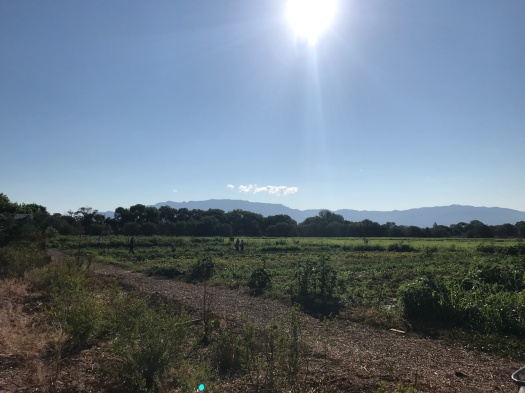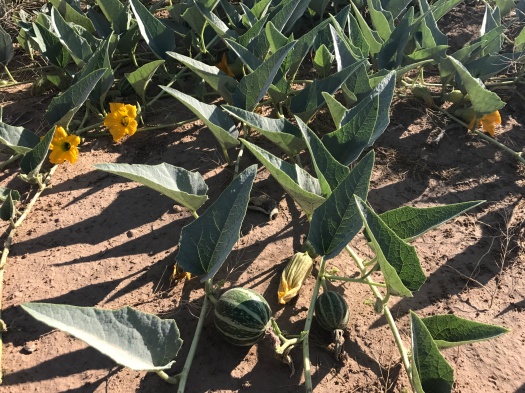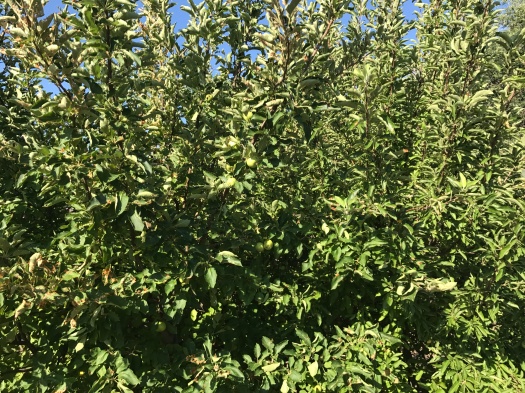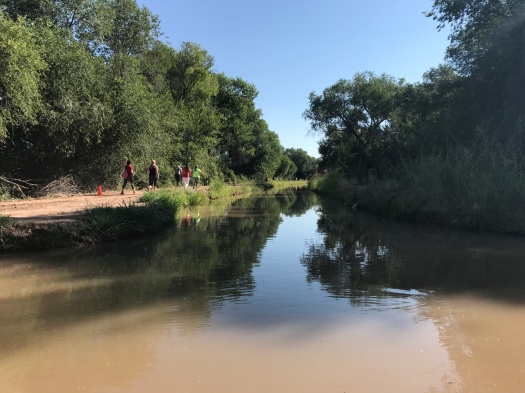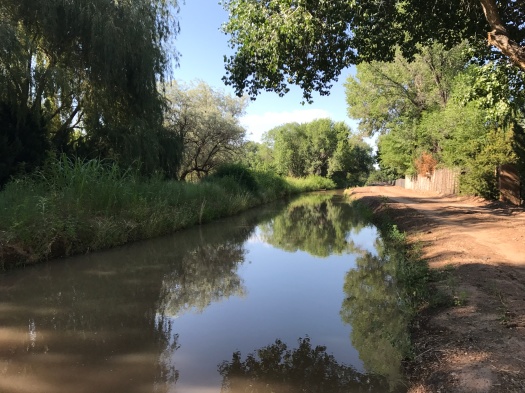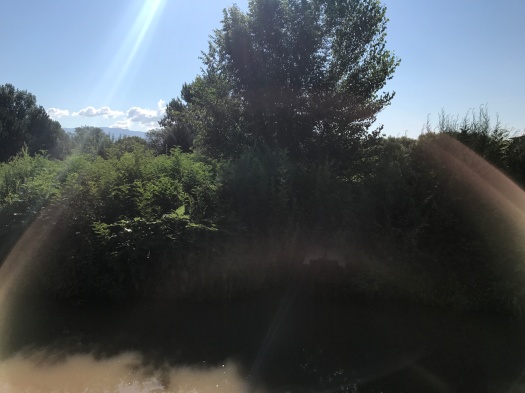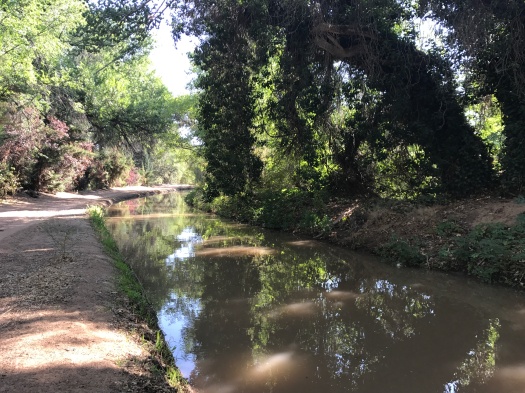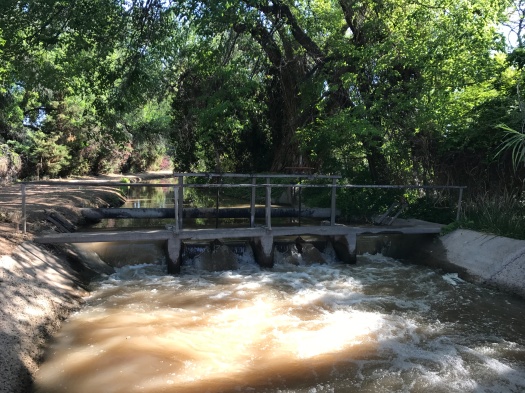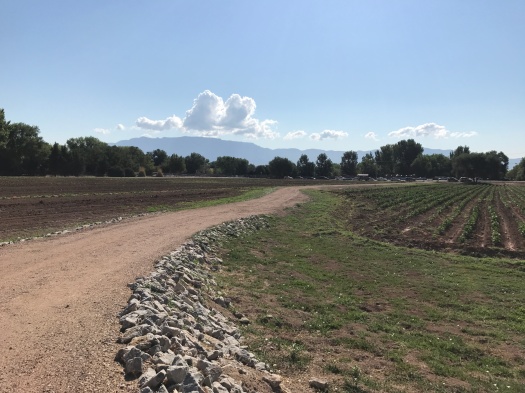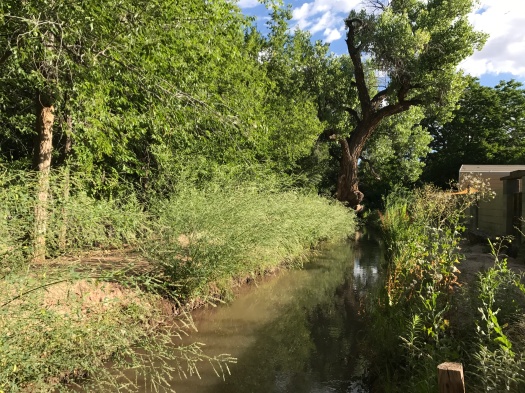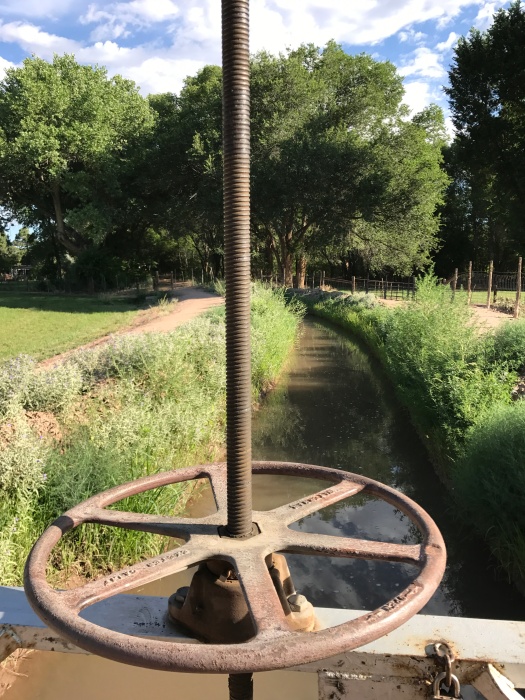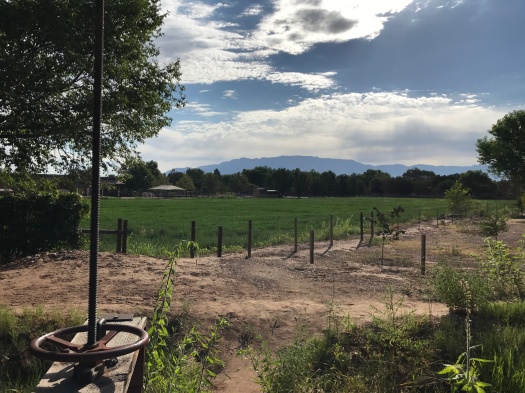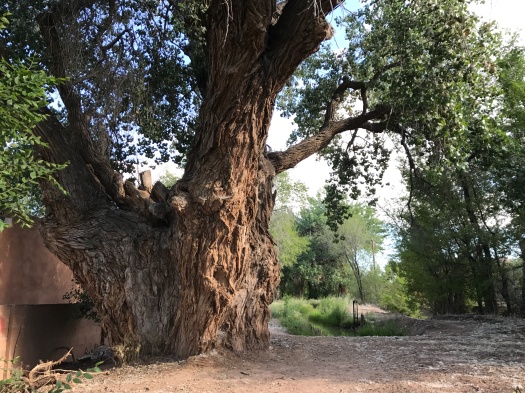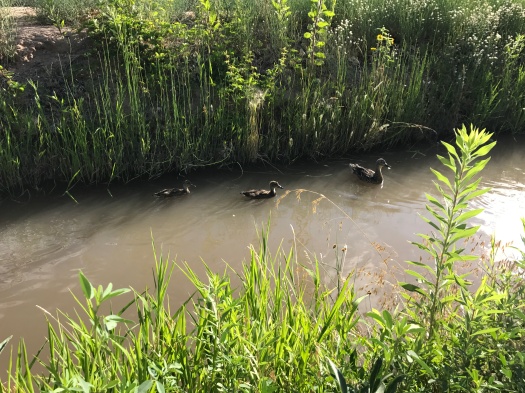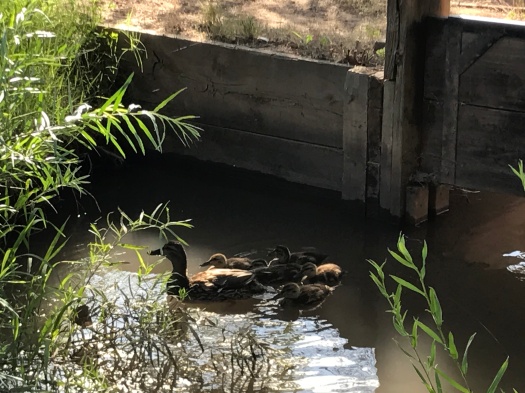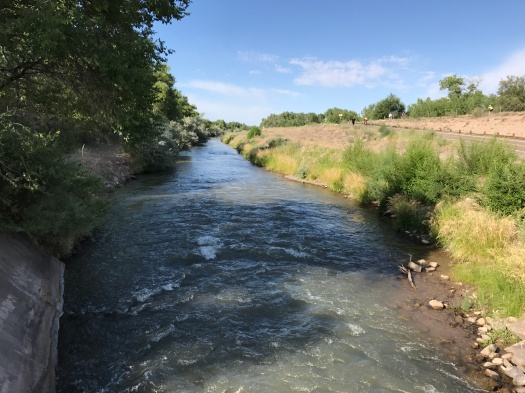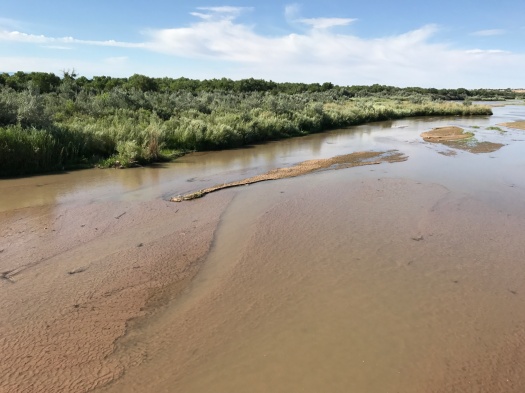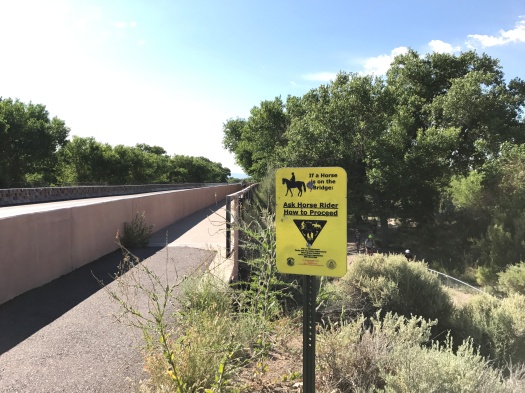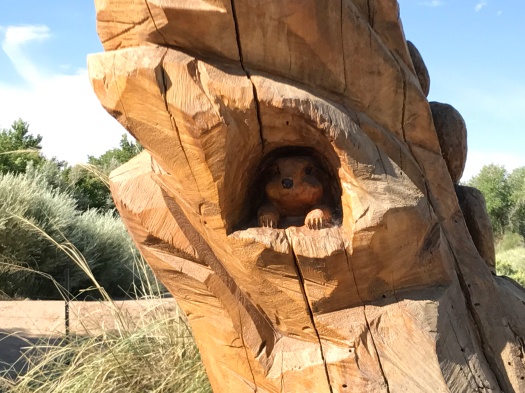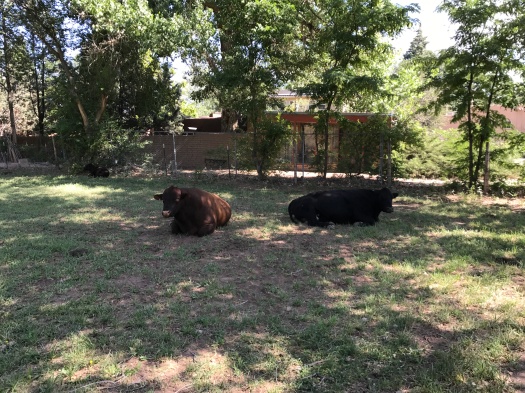Now, this is the Sandia Crest I know.
The place where the air is as clear and crisp as the first day of the world.
The place where the sun and the wind feel right on your skin, a mile above the valley’s dry blaze. You might even need a jacket.
The Sandia Crest of last week, nearly as hot and bright as the valley, fades into a not-quite-believable memory.
Two nights of thunderstorms that meant business have left their mark. The air’s heavy and cool, the trail oozing smells of soil and pine.
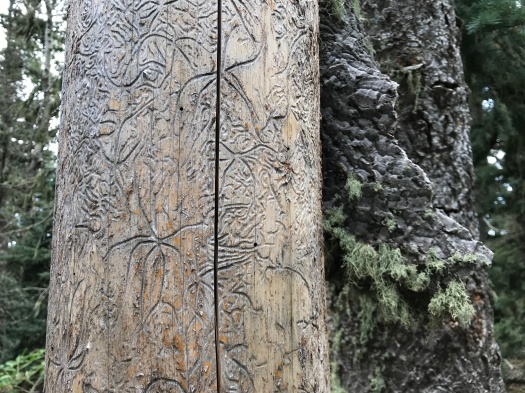
We descend carefully over muddy tree roots. A big evergreen, blown down by one of the storms, blocks our path; we climb around it.
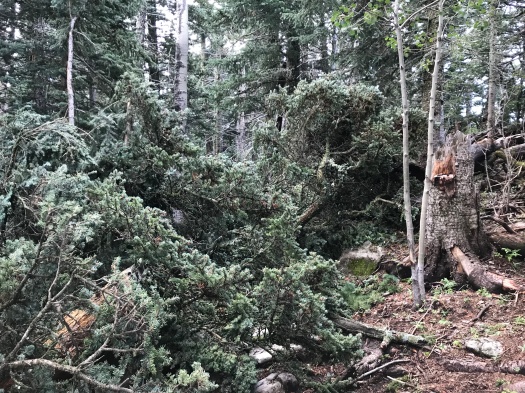
We bypass Del Agua Overlook, the world’s greatest overlook, which we discovered here last week, and spent our lunch hour watching the light and shadow play across the top of the Needle.
As spectacular as it was, we know there’s more, and we want to see it.
Mini-overlooks abound. The Needle’s shoulder comes into view.
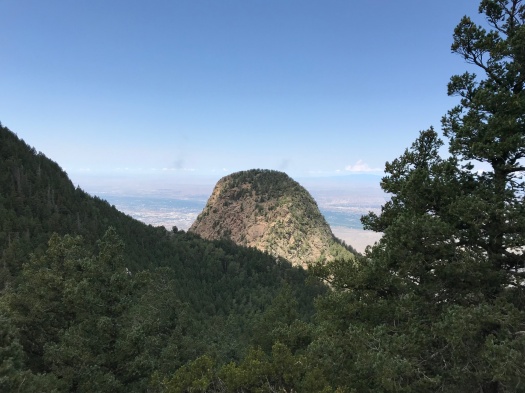
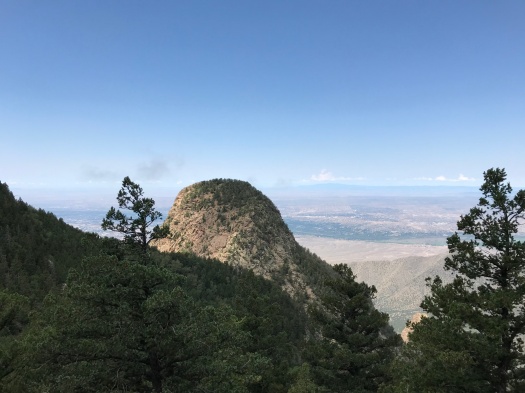
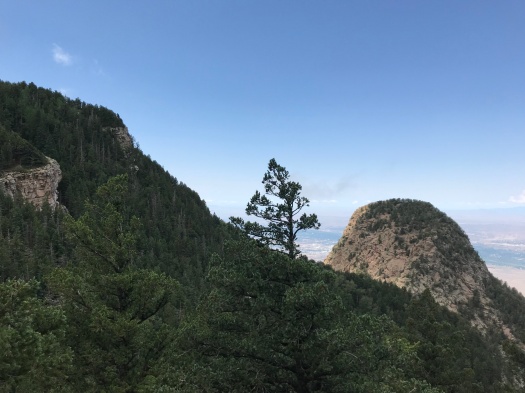
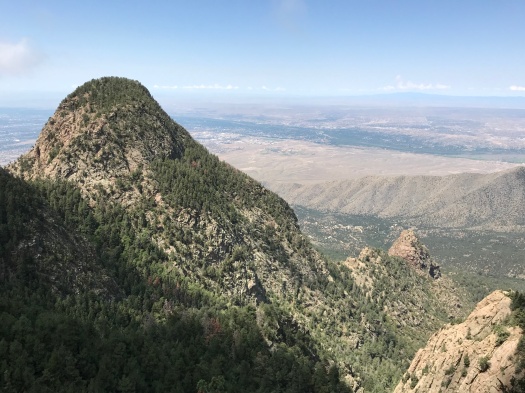
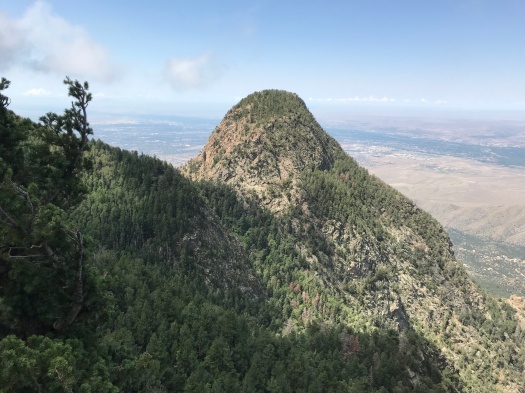
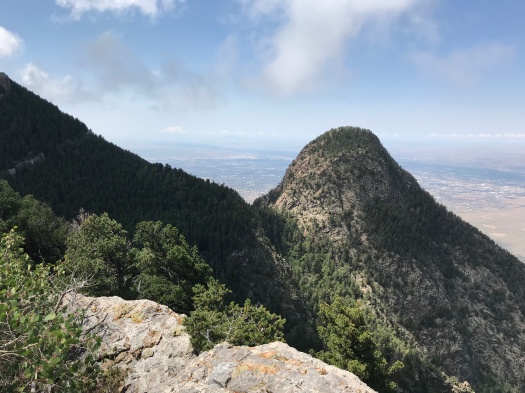
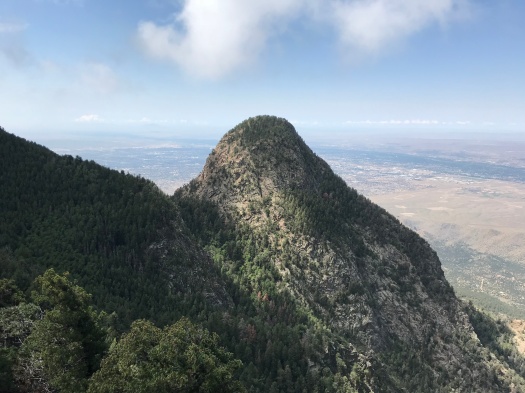
We see more and more of the limestone ridge stretching back to the crest.
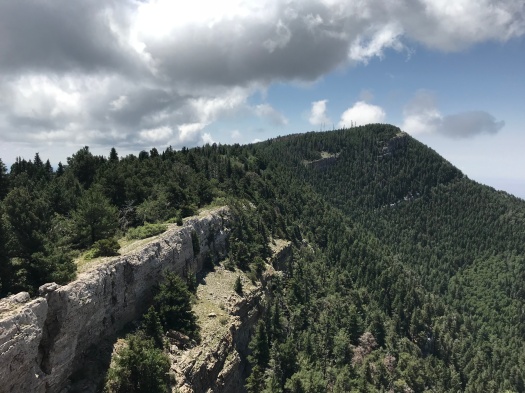
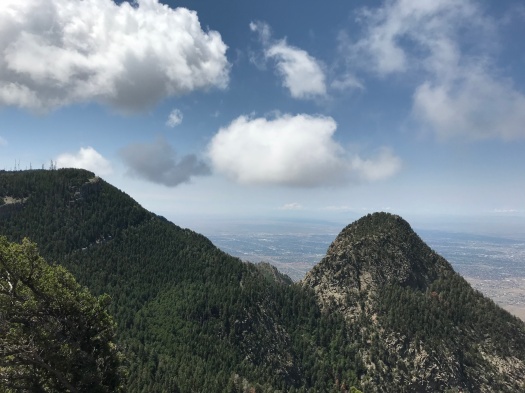
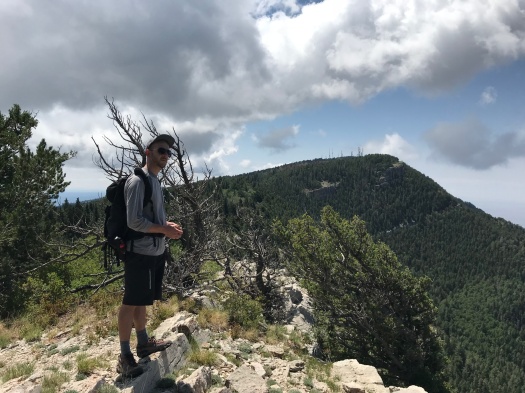
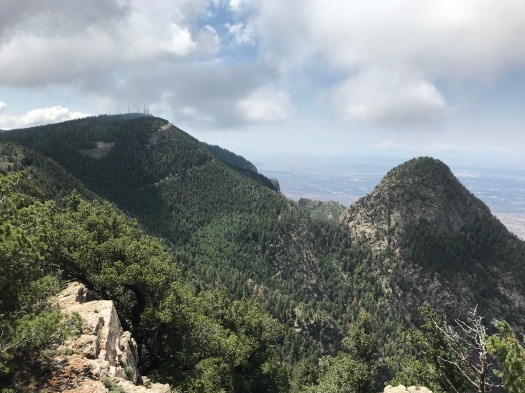
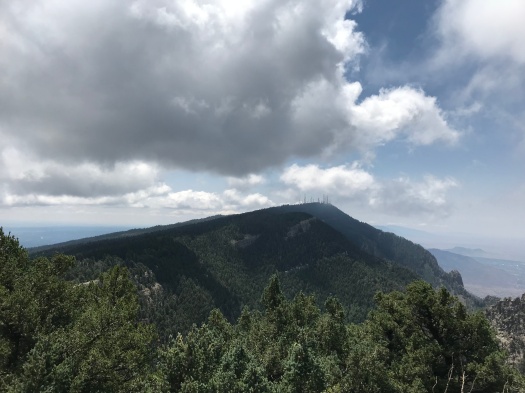
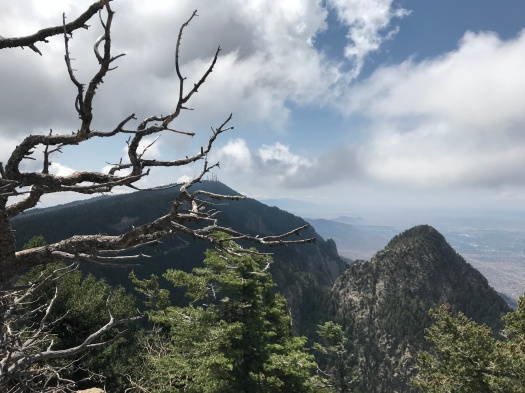
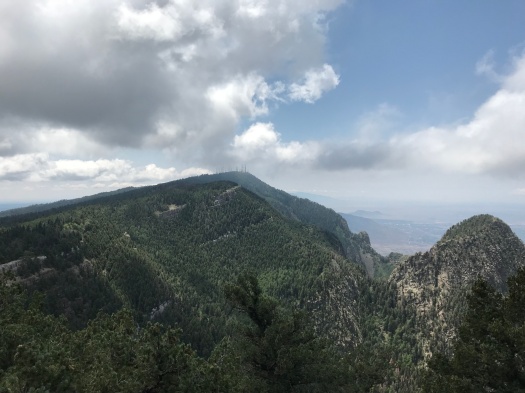
The trail begins ascending, fossil-rich limestone poking more frequently into the path. The sun ascends, too, and when we emerge from dense stands of aspen and spruce, it quickly warms us.
We turn. We’re now headed for a ridge higher than everything around it, one we’d spotted from last week’s overlook. The vantage point from there will be one we’ve never seen.
But first, a clamber over steep limestone. I stop to eat lunch on a ledge before the last push.
Before we even reach the top, I look back and see the Del Agua Overlook, its limestone shelf carpeted in golf-course green.
Gray wisps coalesce in front of us. My husband thinks a building far below must be on fire. It’s a good guess – everything’s on fire right now – but what we’re seeing are wisps of cloud playing across the green slope we’ve just traveled.
At the top of the ridge, a commanding view of Juan Tabo Canyon, glimpses of the San Pedro Mountains and Ortiz Mountains in the valley behind us.
For just a second, I think about the next ridge, and the next, and the next.
But we’ve gone nearly three miles, and my ankles and knees are talking to me from all the clambering. The return route is a 700-foot elevation gain.
I snap a sideways view of the top and clavicle of the Needle as we return.
This is the Sandia Crest I know, a place where you’re always one ridge away from seeing something you’ve never seen before.
Hike length: 5.6 miles
Difficulty: moderate
Trail traffic: moderate
Wildlife spotted or heard: swifts, brown creepers, chipmunk, butterflies, vulture, crow, squirrel, mule deer on the Crest Highway
